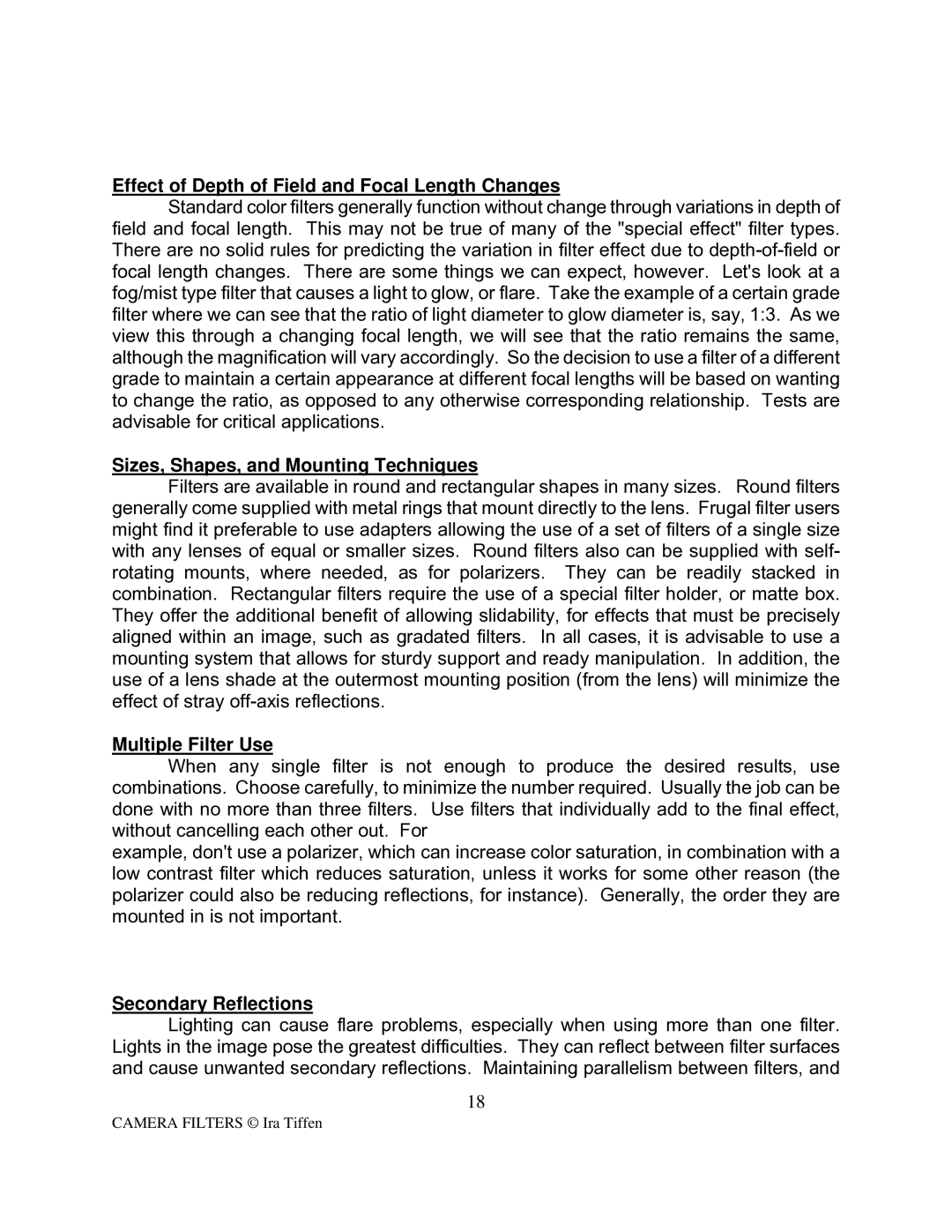Effect of Depth of Field and Focal Length Changes
Standard color filters generally function without change through variations in depth of field and focal length. This may not be true of many of the "special effect" filter types. There are no solid rules for predicting the variation in filter effect due to
Sizes, Shapes, and Mounting Techniques
Filters are available in round and rectangular shapes in many sizes. Round filters generally come supplied with metal rings that mount directly to the lens. Frugal filter users might find it preferable to use adapters allowing the use of a set of filters of a single size with any lenses of equal or smaller sizes. Round filters also can be supplied with self- rotating mounts, where needed, as for polarizers. They can be readily stacked in combination. Rectangular filters require the use of a special filter holder, or matte box. They offer the additional benefit of allowing slidability, for effects that must be precisely aligned within an image, such as gradated filters. In all cases, it is advisable to use a mounting system that allows for sturdy support and ready manipulation. In addition, the use of a lens shade at the outermost mounting position (from the lens) will minimize the effect of stray
Multiple Filter Use
When any single filter is not enough to produce the desired results, use combinations. Choose carefully, to minimize the number required. Usually the job can be done with no more than three filters. Use filters that individually add to the final effect, without cancelling each other out. For
example, don't use a polarizer, which can increase color saturation, in combination with a low contrast filter which reduces saturation, unless it works for some other reason (the polarizer could also be reducing reflections, for instance). Generally, the order they are mounted in is not important.
Secondary Reflections
Lighting can cause flare problems, especially when using more than one filter. Lights in the image pose the greatest difficulties. They can reflect between filter surfaces and cause unwanted secondary reflections. Maintaining parallelism between filters, and
18
